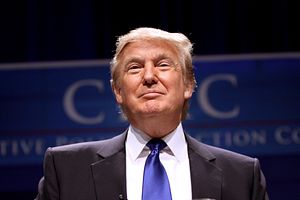When President Barack Obama gave his handover talk to Donald Trump in the White House, he insisted that the number one foreign policy problem for the incoming president was the nuclear threat from the Democratic People’s Republic of Korea (DPRK), commonly referred to as North Korea. One can argue as to whether other threats such as Islamic State and al-Qaeda are more serious but as Pyongyang gains options and confidence after its recent missile tests, time is not on America’s side. The challenge is getting North Korea to talk and preventing a Washington-Seoul rift if a progressive South Korean president is elected in May.
It should be painfully clear to everyone that the DPRK will not give up its nuclear arsenal. Leader Kim Jong-un regards his nukes as the sole guarantee of his survival and cares little for the economic well-being of his people.
With a new administration in Washington, DPRK watchers are now working overtime to come up with a credible policy to deny Kim’s nuclear ambitions. Among the ideas being touted is a surgical strike on the DPRK’s nuclear facilities. This is a really crazy policy given that the whereabouts of many of the DPRK nukes are unknown and any pre-emptive strike would lead to a devastating, retaliatory conventional strike on Seoul – a metropolis of 10 million just 60 km from the DPRK.
A variation on the military response would be to allow South Korea and Japan to develop their own nuclear capabilities, something that Trump talked about in the election campaign. But this would blow a massive hole in the global non-proliferation regime and it is doubtful that it would actually increase security.
Another option is regime change but exactly how the United States might achieve this by overt or covert means is never spelled out. There is no evidence that the United States (or Japan or South Korea) has been able to identify, let alone fund and equip, any potential opposition inside the DPRK.
Then we come to tightening the existing comprehensive UN sanctions. It is argued, rightly, that there are loopholes to be closed and that China should be pressed further to tighten the screws on its wayward ally. But there are always loopholes in sanctions regimes and the evidence suggests that Kim would still be able to retain his grip on power even if there were to be tighter sanctions.
Nor is it likely that China will allow its troublesome ally to fall apart. Beijing worries about having to cope with sudden massive refugee flows and possible U.S. troops on its border. We may think this is irrational but it is not what we think that counts — it’s what the Communist Party of China thinks.
There is clearly no magic silver bullet for denuclearizing North Korea. So what is left? What Kim craves above all is recognition from the United States that it will not engage in regime change. There is still no peace treaty between the two Koreas following the 1952 armistice that settled the de facto partition of Korea along the 38th parallel.
This means the only possible solution is a grand bargain, inevitably a messy grand bargain, but a bargain that is better, to paraphrase the Chinese foreign minister, than allowing two runaway trains to collide.
Enter Donald Trump. The president has the opportunity to put into practice “the art of the deal.” What might the grand bargain look like? On the DPRK side it would commit to halting its production and testing of nuclear weapons and allow existing stockpiles to be monitored by International Atomic Energy Agency (IAEA) inspectors (as with the Iran agreement). The United States would scale down its annual military exercises with South Korea and ease economic and other sanctions. This could then lead to a final peace treaty in which the DPRK was explicitly recognized by the United States. Critics would cry foul but the question of the unification of Korea might best be left to a future generation.
There have been negotiations before. The 1994 Agreed Framework shut down North Korea’s plutonium production for a decade, but collapsed after Washington did little to “move toward full normalization of political and economic relations,” as the agreement called for. The joint statement issued following the 2005 Six Party Talks called for North Korea to put a two-year halt on producing plutonium and testing missiles for two years, but South Korea failed to provide promised energy aid.
Now Trump has the chance to make history. Just like Nixon, the Republican, making the opening to China, the scene is set for Trump to invite Kim to Washington to sign a peace treaty. And the reward for Trump – apart from the chance to build a hotel and golf course in North Korea? He would certainly be in the frame for the Nobel Peace Prize.
Fraser Cameron is Director of the EU-Asia Center.

































